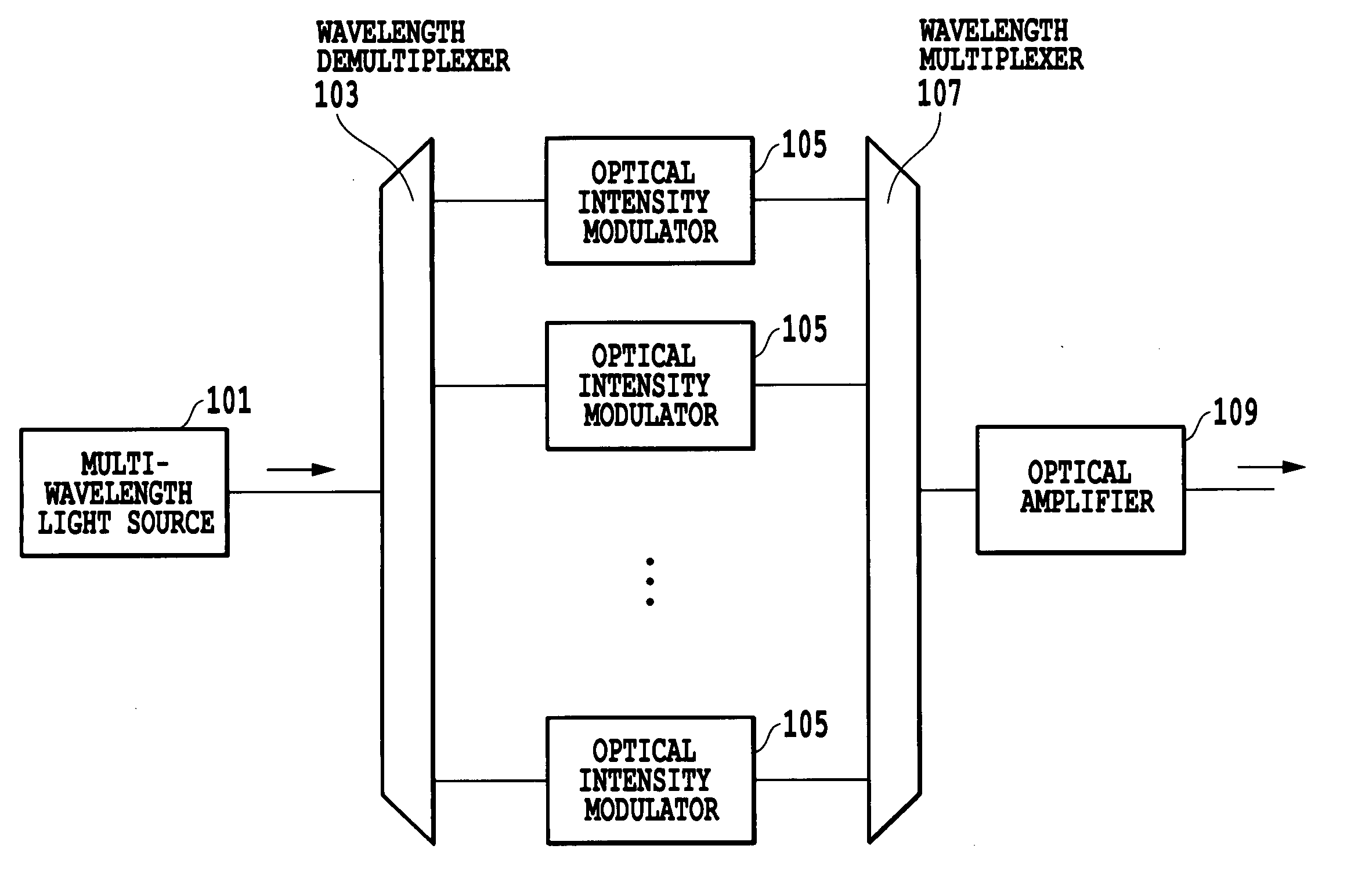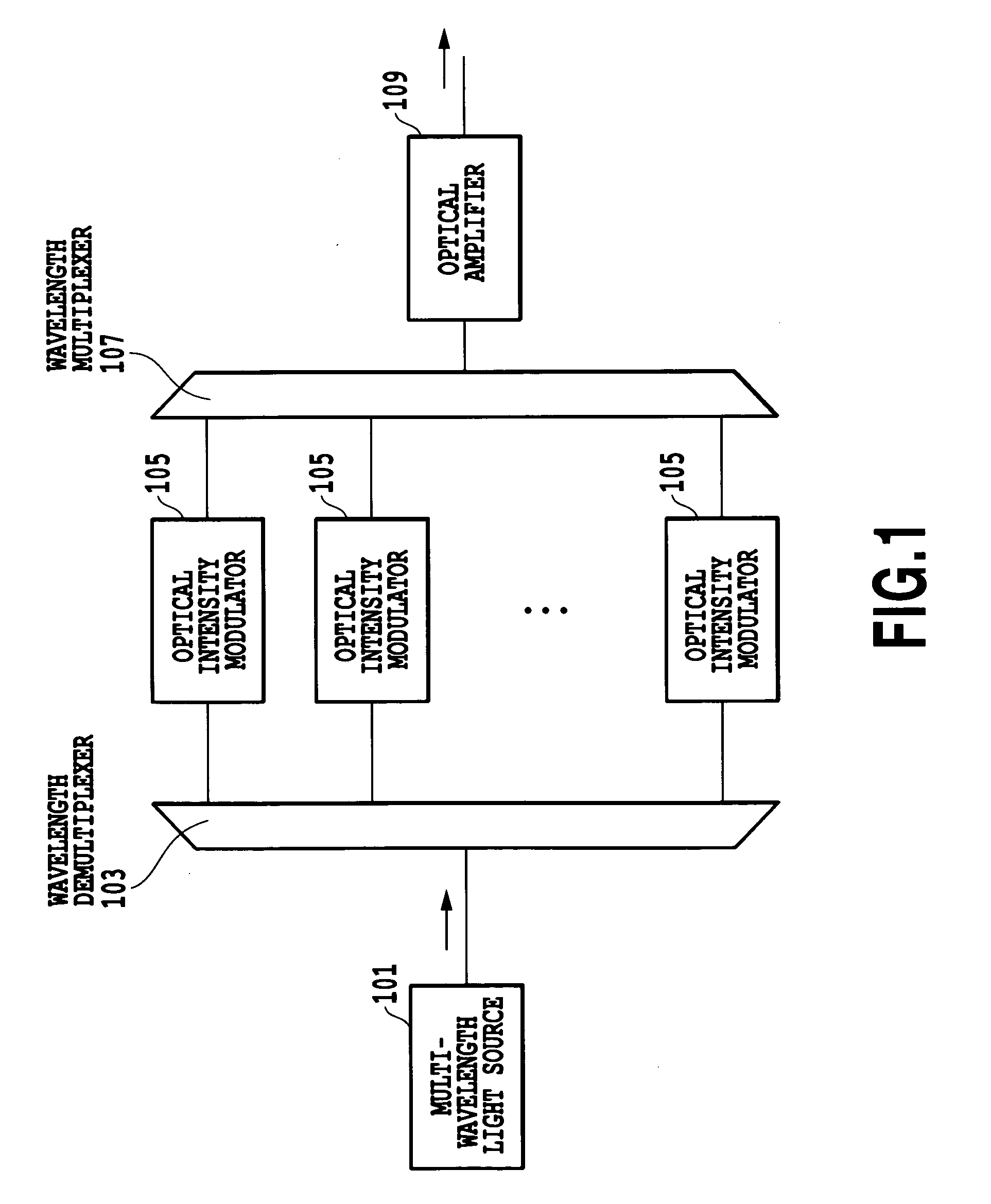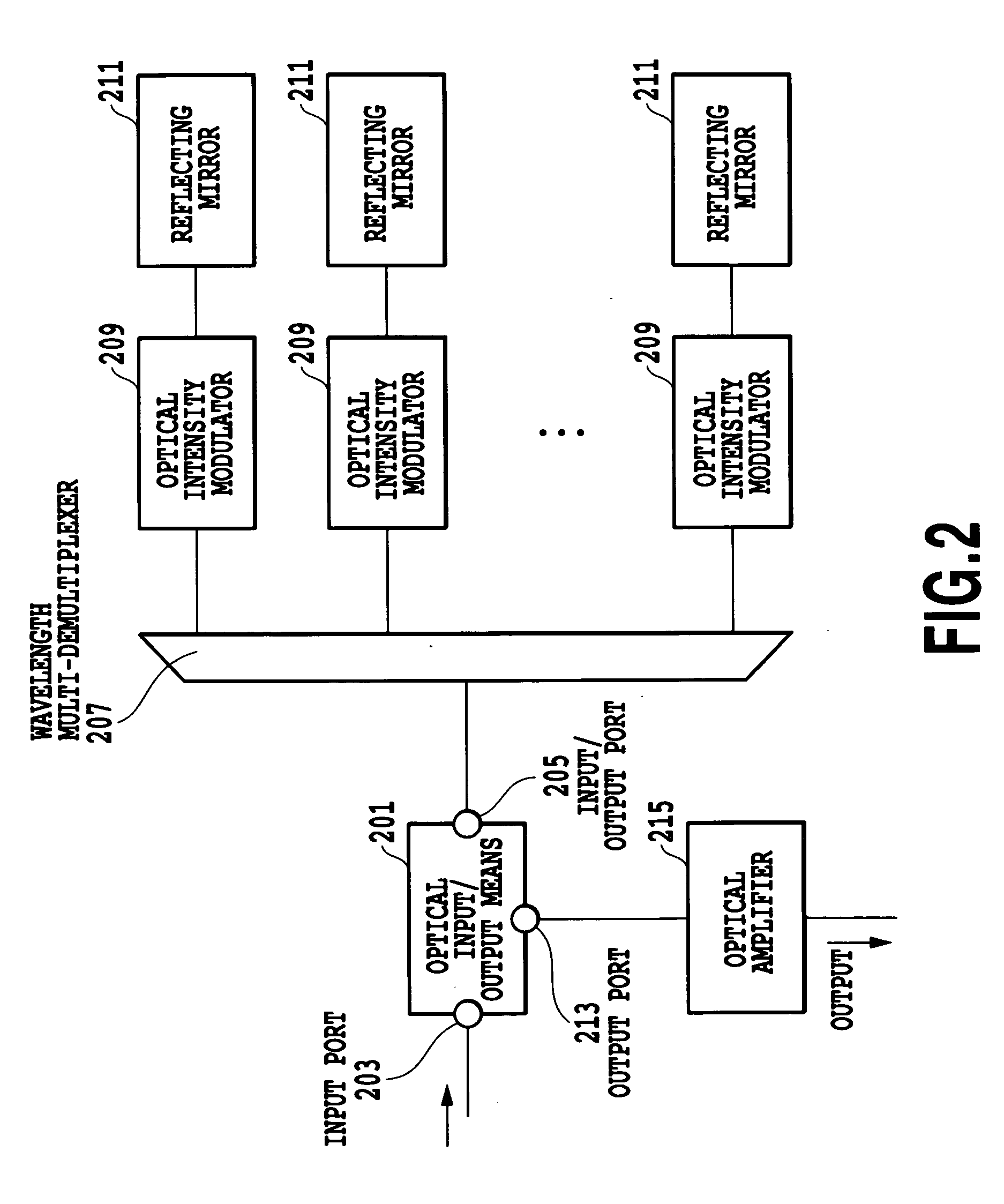Optical modulating device
- Summary
- Abstract
- Description
- Claims
- Application Information
AI Technical Summary
Benefits of technology
Problems solved by technology
Method used
Image
Examples
first embodiment
[0039] The first embodiment in accordance with the present invention has, in a transmission-type optical modulation apparatus including semiconductor optical amplifiers (SOAs) connected in cascade, optical isolators inserted at every alternate units to reduce the effect of the reflected light, thereby implementing the stable amplifying function and cost reduction at the same time. Before describing concrete configuration examples of the present t, its principle will be explained.
[0040]FIG. 7 is a diagram illustrating reflected light rays when a plurality of SOAs are arranged in the multistage connection. In the multistage connection, to operate it as an optical modulation apparatus, one of the SOAs must be used as an optical intensity modulator, or an external modulator must be inserted. However, to simplify the description of the reflected light rays here, the SOAs are assumed to function just as an optical amplifier.
[0041] In FIG. 7, n (>=2) semiconductor optical amplifiers (S1,...
second embodiment
[0051]FIGS. 12A-12C are diagrams each showing a configuration of the optical modulation apparatus of a second embodiment in accordance with the present invention. The present embodiment is a variation of the first embodiment, which has an optical intensity modulator M inserted between any two of three SOAs S1, S2 and S3 constituting the optical amplifier.
[0052]FIG. 12A shows a configuration having the optical intensity modulator M inserted into a section in which neither the optical isolator O1 nor O2 is inserted. Although the example is shown here which has the optical intensity modulator M inserted into the second optical path (optical connection means) x2 between the first and second SQAs S1 and S2, the optical intensity modulator M can be inserted into a fourth optical path 4 between the third SOA S3 and the output terminal. In the latter case, however, it is necessary to use an optical intensity modulator M that can handle the optical power amplified by the final stage SOA S3....
third embodiment
[0056] A third embodiment of the optical modulation apparatus in accordance with the present invention relates to a system that can achieve the stable amplifying function by reducing the effect of the reflected light rays on the end faces of the bidirectional optical amplifiers by imposing the following numerical limitation on the gain of the amplifier in the foregoing system configuration including the bidirectional optical amplifiers as shown in FIG. 4. The numerical limitation on the amplifier gain in accordance with the present invention will be described below.
[0057] As shown in FIG. 4, there are two reflected light rays from the ends of the bidirectional optical amplifier 409 or 415: first reflected light 1 travels in the same direction as the modulated light, and second reflected light 2 travels in the same direction as the continuous wave. The continuous wave undergoes the intensity modulation and becomes the modulated light. Since the reflected light 2 travels through the ...
PUM
 Login to View More
Login to View More Abstract
Description
Claims
Application Information
 Login to View More
Login to View More - R&D
- Intellectual Property
- Life Sciences
- Materials
- Tech Scout
- Unparalleled Data Quality
- Higher Quality Content
- 60% Fewer Hallucinations
Browse by: Latest US Patents, China's latest patents, Technical Efficacy Thesaurus, Application Domain, Technology Topic, Popular Technical Reports.
© 2025 PatSnap. All rights reserved.Legal|Privacy policy|Modern Slavery Act Transparency Statement|Sitemap|About US| Contact US: help@patsnap.com



